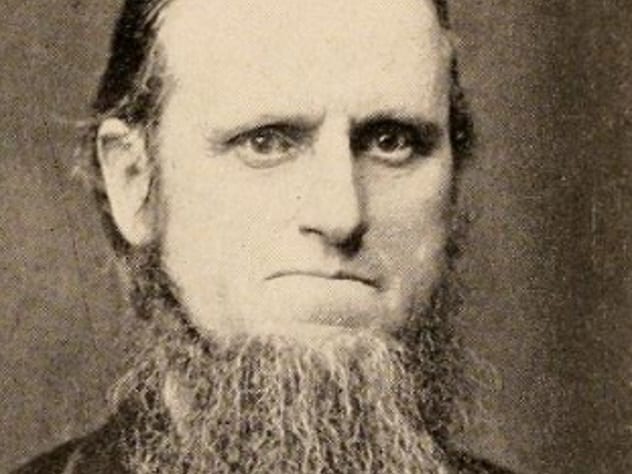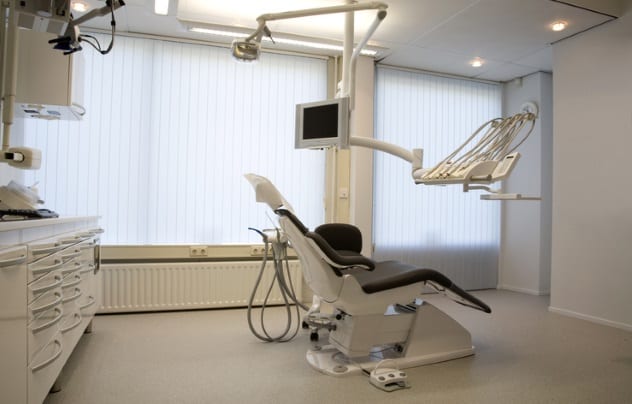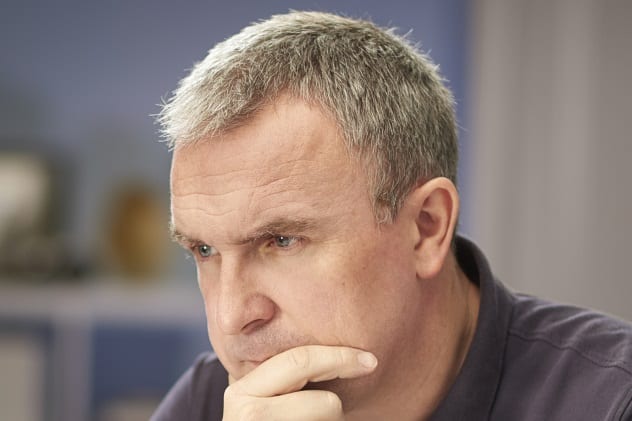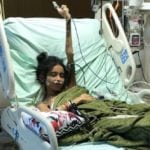 Animals
Animals  Animals
Animals  Weird Stuff
Weird Stuff 10 Weird Things People Used to Do at New Year’s
 Our World
Our World 10 Archaeological Discoveries of 2025 That Refined History
 Weird Stuff
Weird Stuff 10 Fascinating Facts You Might Not Know About Snow
 Miscellaneous
Miscellaneous Top 10 Things Crypto Was Supposed to Change & What Actually Did
 History
History 10 Huge Historical Events That Happened on Christmas Eve
 Music
Music 10 Surprising Origin Stories of Your Favorite Holiday Songs
 History
History 10 Less Than Jolly Events That Occurred on December 25
 Weird Stuff
Weird Stuff 10 Funny Ways That Researchers Overthink Christmas
 Politics
Politics 10 Political Scandals That Sent Crowds Into the Streets
 Animals
Animals 10 Species That Refused to Go Extinct
 Weird Stuff
Weird Stuff 10 Weird Things People Used to Do at New Year’s
 Our World
Our World 10 Archaeological Discoveries of 2025 That Refined History
Who's Behind Listverse?

Jamie Frater
Head Editor
Jamie founded Listverse due to an insatiable desire to share fascinating, obscure, and bizarre facts. He has been a guest speaker on numerous national radio and television stations and is a five time published author.
More About Us Weird Stuff
Weird Stuff 10 Fascinating Facts You Might Not Know About Snow
 Miscellaneous
Miscellaneous Top 10 Things Crypto Was Supposed to Change & What Actually Did
 History
History 10 Huge Historical Events That Happened on Christmas Eve
 Music
Music 10 Surprising Origin Stories of Your Favorite Holiday Songs
 History
History 10 Less Than Jolly Events That Occurred on December 25
 Weird Stuff
Weird Stuff 10 Funny Ways That Researchers Overthink Christmas
 Politics
Politics 10 Political Scandals That Sent Crowds Into the Streets
10 People With Amnesia Who Literally Lost Their Minds
For most of us, memory is the cornerstone of who we are. Our past defines us and shapes both who were are now and who we will become. Many of us deliberately set out to make memories that we can enjoy later.
It is commonly known that memories fade a little with age, and conditions such as dementia can rob people of parts of their former selves. But for people with neurological conditions like amnesia, the loss of memory can prove utterly devastating and leave them with no clue as to the person that they are.
10 Henry Molaison

Born in 1926, Henry Molaison, or H.M. as he was referred to in medical journals, had suffered epileptic seizures since the age of ten, possibly as a result of being run over by a bicycle at age seven. His seizures increased in severity, and by the time he was 16, he was suffering major seizures daily. The seizures continued until 1953, when he was offered an experimental procedure which would remove parts of the left temporal lobe. Though the surgery was a success as far as controlling the epilepsy went, Molaison was left with profound amnesia.[1]
Molaison could remember his childhood. He knew his name and those of his family. He even remembered the Wall Street Crash of 1929. However, he had trouble remembering things from roughly a decade preceding the surgery. He also lost the ability to make new memories. He would wake every day without any memory of the day before.
Henry Molaison allowed neuroscientists to study his brain for over 50 years, until his death in 2008. This has resulted in major discoveries about how we make and store memories. He even donated his brain to science after his death.
9 Ansel Bourne

Ansel Bourne was an evangelical preacher. In 1887, he “woke up” to find himself running a general store, without any knowledge of how he had arrived there. The last date he remembered was two months prior to his arrival in Norristown, Pennsylvania.
Bourne is said to have experienced a disassociative fugue, causing him to forget his own identity. People in this state often adopt a new identity and travel long distances. The fugue state is most often brought on by trauma, and there is no treatment, though the condition is often temporary. Bourne’s is probably the best known case of disassociative fugue and may have been Robert Ludlum’s inspiration when he came to naming his character in The Bourne Identity.[2]
Though many people doubted the truthfulness of Bourne’s account of his “lost weekends,” there seems to be little to suggest that he was doing anything disreputable while he was away. In fact, he spent most of his time selling sweets and going to church. He made very little capital out of his adventure. In fact, his fugue-state self seems to have been remarkably boring.
8 W.O.

A patient, identified only as “W.O.” or “William,” visited the dentist in March 2005 for root canal surgery. Up until the time of his injection, W.O. could remember his life as well as anyone else. Since that time, however, he can only store memories for 90 minutes before they are wiped out again. Neuroscientists are baffled as to the cause of the condition.
W.O., who is believed to suffer from anterograde amnesia, can remember getting into the chair and being injected with local anesthetic but nothing from that point onward. He wakes up every morning believing that it is still 2005. His wife has written notes of major events for him in a file labeled “First Thing—Read This.”
Neuroscientists are baffled as to why the anesthetic might have caused the memory loss. Since 2005, W.O. has only managed to remember one new thing: his father’s death. It is thought that his powerful grief forced itself along the memory tracks of his brain, when everything else just slipped away. Doctors treating him hope that this means they will be able to build on this to help him create new, happier memories.[3]
7 Clive Wearing
Clive Wearing was an accomplished classical musician when, in 1985, he contracted herpesviral encephalitis. The virus attacked his central nervous system, damaging his ability to store new memories. His loss of memory is so profound that he can hold on to current memories for no longer than 30 seconds.
The condition has left him in a constant state of confusion. He cannot understand what has happened to him, and when people try to explain, he has forgotten the question long before they reach the end of the answer. Wearing also remembers little of his life before 1985, except his love for his wife. He has kept a diary of his thoughts over the years, which has consisted of repeated variations of the same sentence: “Now I am awake.”[4]
Astonishingly, however, Wearing’s ability to play the piano has not diminished. He continues to be able to read and play music. However, when the sheet music calls for him to repeat a section, he will repeat it over and over again, forgetting each time that he has already played it.
6 Anthelme Mangin

Anthelme Mangin was a French soldier who fought in World War I. In 1918, he was sent home suffering from amnesia, along with 65 other casualties, all of whom had, literally, lost their minds. Unlike most, however, Mangin was not carrying any identification. He gave his name as “Anthelme Mangin.” He was diagnosed with a form of dementia and placed in an asylum in France.
In 1920, a newspaper published a feature with the pictures of several unidentified patients. Some 300 families, desperately looking for missing loved ones, claimed Mangin as their own. He met with each family to try to spark recognition, but without success.
He was finally identified in 1930 as Octave Monjoin, who had been taken prisoner on the Western Front in 1914. No one knows what happened to him between his capture and his discovery in 1918. Mangin was taken to his hometown. He was left at the train station, and his caregivers watched from a distance as he walked from the station directly toward his father’s house. He recognized his hometown, including the local cafe and the lightning-struck tower of the church, but did not know his father or brother.
Though it seemed the mystery was solved, other claimants to “the ghost man” refused to accept that Mangin was not their own missing son, and he was kept in the psychiatric hospital until a court case was decided. By the time the case was over, and he was officially declared to be Octave Monjoin, his father and brother were both dead.
In a sad conclusion the unknown soldier’s story, Anthelme Mangin lived out the rest of his life in the asylum, dying in 1942 of malnutrition and neglect.[5]
5 Michael Boatwright

In 2013, an unconscious man was found in a motel in Southern California and was taken to a hospital. His identification documents named him as Michael Boatwright, a former US Navy aircraft engineer and a native of Florida. When he finally came to, however, Michael Boatwright could remember nothing of his life in Florida or his military service. He didn’t even recognize his name, his nationality, or his language.
Michael Boatwright believed himself to be Johan Ek. And he also believed he was Swedish.
Despite being shown photographs of his previous life, he could not feel any affinity with Michael Boatwright. And, indeed, his previous life appeared to have been rather complicated. When found, he had five tennis rackets in his room but had no idea why. Investigators discovered that Boatwright had at some point married a Japanese woman and had a son, taught English in China, and ran a consultancy company with a Swedish name.
Boatwright appeared to be in a fugue state, the cause of which is most often trauma or an accident. He spoke only Swedish and appeared to have forgotten the English language. He remained at the hospital for five months while social workers tried to uncover his past. Despite finding a sister in Louisiana, Boatwright moved to Sweden, believing that this was his true home. Unfortunately, his life took another strange turn, and he was found dead in his new apartment soon after, from what is believed to have been suicide.[6]
4 Kent Cochrane

In 1981, Kent Cochrane, or Patient K.C. as he came to be called, had a motorcycle accident which resulted in the loss of parts of his memory. Cochrane was able to recall facts but not personal memories.[7]
Cochrane was unable to form new memories, nor could he remember events immediately prior to his crash. He knew facts about himself but couldn’t generate memories from them. So, he could, for example, look at a photograph and recognize the people in it and even the occasion when the picture was taken, but looking at it would not trigger any memories outside of the photo.
However, Cochrane’s intellect did not seem to be damaged by his memory loss, and he could learn, albeit with much repetition. He learned, for example, to check the refrigerator door for messages from his family and how to file books in the library where he worked.
Kent Cochrane was the subject of over 30 scientific papers, and his brain was studied by neuroscientists around the world. He died in 2014.
3 Michelle Philpots

In 1994, Michelle Philpots developed epilepsy as a result of two car accidents, both of which caused head trauma. Her seizures grew steadily worse, and Michelle began to become forgetful. She was eventually fired from her job after photocopying a single document over and over again, forgetting each time that she had already done it.
And then her memory stopped working altogether. Michelle Philpots is now permanently stuck in 1994. Every day when she wakes up, she is the person that she was then. Her rare form of anterograde amnesia means she wakes up next to a husband, who, to her, has aged a quarter of a century overnight. She cannot even remember her own wedding, relying on the photos to prove it really happened.[8]
To remind herself who she is, she leaves herself notes around her home. She is rarely able to leave home alone and has to use sat-nav to walk to her local shop. Damaged brain cells were removed during an operation in 2005, but although the operation managed to control her seizures, there is no way to repair the brain damage or restore her memory.
Michelle Philpots is destined to live in 1994 forever.
2 Susie McKinnon

Susie McKinnon does not have amnesia, despite the fact that she cannot remember being a child or, indeed, any age other than the age she is now.
Having had the condition since birth, it was years before McKinnon realized that when other people told stories from their past, they weren’t just making up the details as they went along. It was only when a friend who was studying medicine asked her to take part in a memory test that she realized that her memory did not work in the same way as other people’s. She could recall events from her past but could not remember what it felt like to be there.[9]
McKinnon suffers from Severely Deficient Autobiographical Memory, or SDAM. She cannot remember how she felt when she was at school or imagine how she will feel when she goes on holiday in the future. She is unable to recall any fond memories. On the upside, however, she is never plagued by self-doubt and is incapable of holding a grudge because she forgets why she was annoyed in the first place. Her condition also means that she does not feel painful things, such as grief, as profoundly as other people.
Researchers have so far failed to discover any disease or injury which may have caused her condition. However, McKinnon also suffers from aphantasia, or the inability to picture things in her mind. Researchers are still investigating whether there is a link between her lack of autobiographical memory and her “blind mind.”
1 Giulio Canella

In 1927, Mrs. Giulia Concetta Canella saw a newspaper photograph of a man who had been found wandering around a cemetery in Turin in the dead of night. The man had been trying to steal a copper vase, but when approached, he began to cry, saying he had no idea who he was.
Mrs. Canella recognised her husband, Professor Giulio Canella, a philosophy scholar who had been missing in action since World War I. She visited the hospital and, convinced that the man was her husband, took him home, which would have been fine, except that a few days later, an anonymous letter claimed that the man was, in fact, an anarchist and petty criminal named Mario Bruneri.
Bruneri’s family were traced, and his wife, son, brother, two sisters, and his mistress all identified him immediately. Canella/Bruneri is said to have fainted when he saw them, possibly from the trauma but probably from embarrassment.[10]
Mrs. Canella, after her beloved husband had come back to her from the dead, would not give up so easily. When Bruneri’s fingerprints were discovered in the police archives and found to match those of the amnesiac, she took the whole thing to court. After several years of trials and retrials, the court concluded that the amnesiac was Bruneri. Mrs. Canella, the man she was sure was her husband, and the three children they’d had together in the meantime all moved to Brazil.
Prof. Canella/Bruneri died in 1941 in Brazil, and his wife spent the rest of her life trying to prove that her husband had not been an imposter.
Ward Hazell is a writer who travels, and an occasional travel writer.
Read about more cases of amnesia on 10 Amazing Stories Of Amnesiacs Reuniting With Their Families and 10 Bizarre Cases Of Amnesia.








